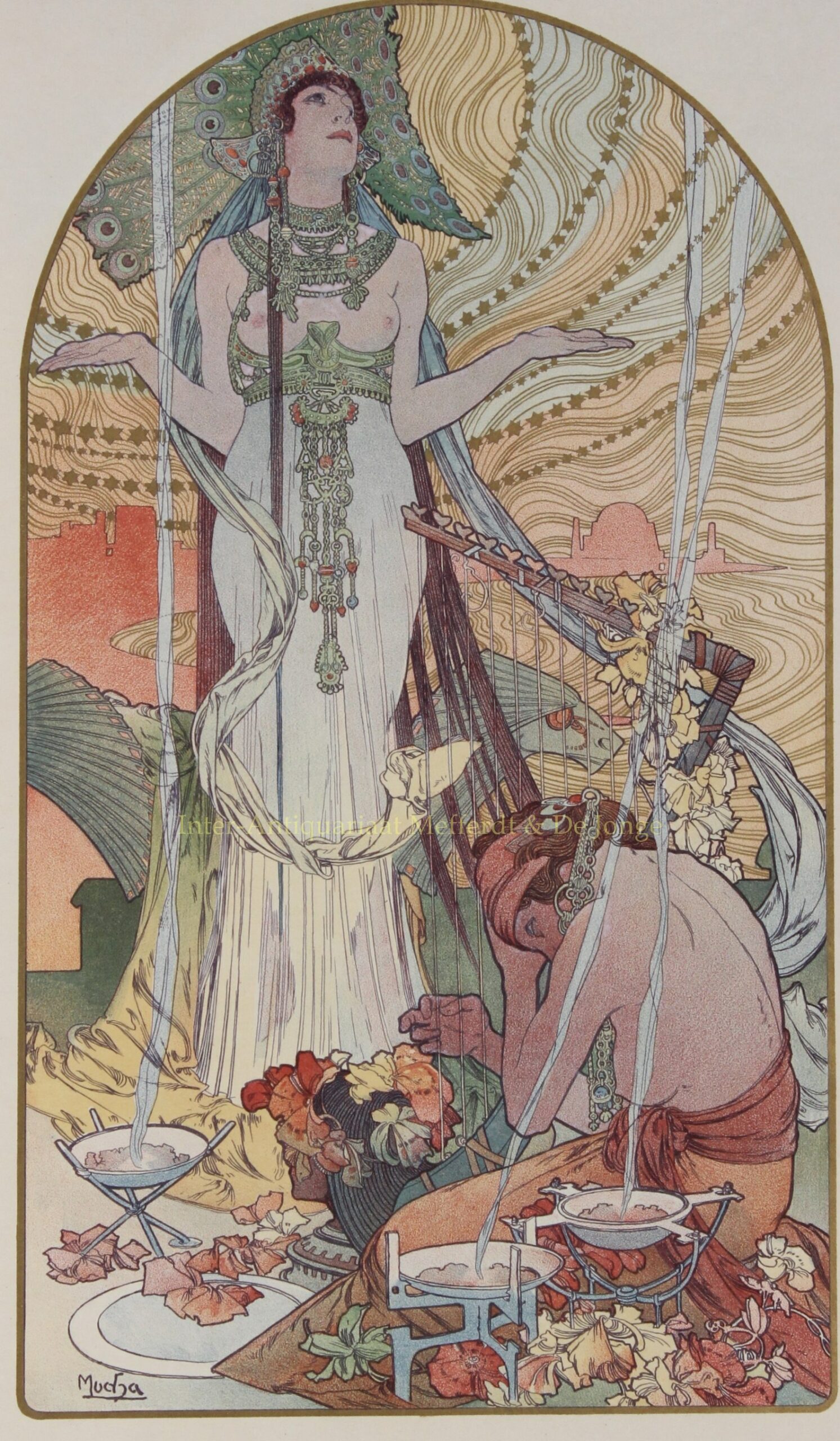“Incantation/ Salammbô” – Alphonse Mucha, 1897
“Incantation/ Salammbô” lithograph by Alphonse Mucha, printed by F. Champenois in Paris as a special supplement for L’Estampe Moderne, issued August 1897. Signed in the stone lower left. Size: 38 x 21,7 cm.
Mucha was probably the single most famous and influential artist of the whole Art Nouveau movement in Europe. This lithograph he made for L’Estampe Moderne, is an outstanding example of the finest period of his decorative style. With its combination of an exotic richness, an overt and luxuriant sensuality, and the marvellous flowing sinuous patterns of line and colour it created a whole new era of taste.
In 1862 Gutave Flaubert wrote his romantic novel “Salammbô”, about the fictional daughter of Hamilcar Barca, the barbaric ruler of Carthage as a subject, in which she was searching for a magic veil (“le Zaïmph” seen here trailing from her shoulder) that was stolen from the city shortly after the First Punic War. Salammbô falls in love with the barbarian Mâtho, the man who stole the veil. When Mâtho is caught and tortured to death, she choses to die rather than marry the man she was meant for. The Zaïmph has brought death upon those who touched it.
Gustave Flaubert’s “Salammbô” is an often stirring mixture and intertwining of the history of the Punic Wars and of the myths held by the people of ancient Carthage. It includes some of the most erotic passages in 19th century literature, between the lovely and exotically beautiful Salammbô and Mâtho, the leader of the barbarians.
In the scene created by Mucha, a priestess advises Salammbô during a session of incantation, that without reobtaining the Zaïmph, Carthage is doomed.
Unlike the Les Mâitres de l’Affiche series, L’Estampe Moderne appeared in 1897-1899 as a series of 24 monthly fascicles, with 4 original lithographs in each. Each commissioned only for this series. Some of the contributing artists included Mucha, Rhead, Meunier, Ibels, Steinlen, Willette and Grasset.
Price: SOLD


